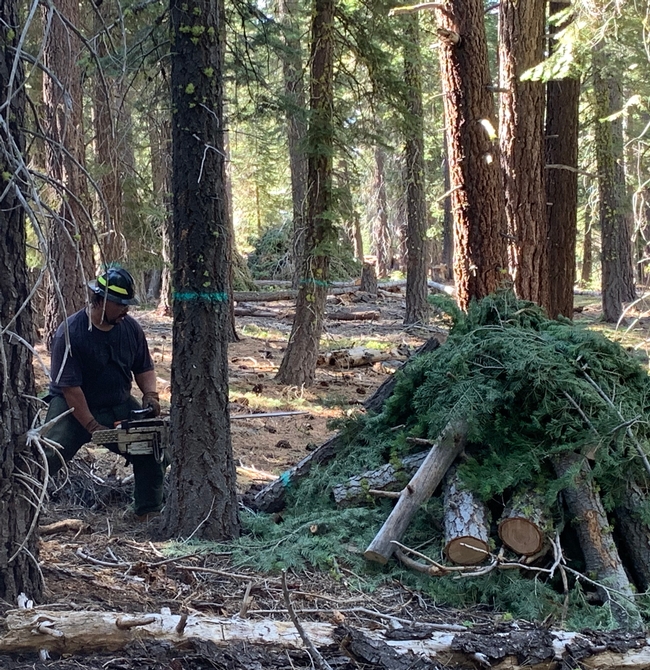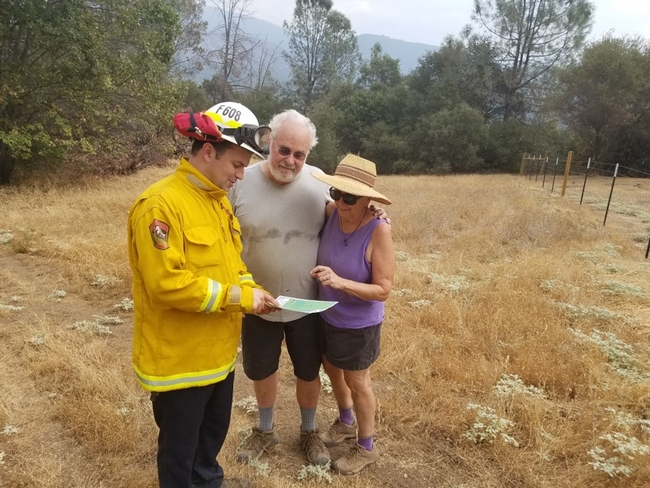In California, ~9 million acres of forestland are owned by individuals, with ~90% of these owners owning less than 50 acres each. Considering California has ~33 million acres of total forestland, that 9 million acres makes up to a lot of our state's forests that individuals are responsible for. The costs of managing these forestlands can be substantial for some private landowners. Zsolt Katay, CALFIRE Forestry Assistance Specialist, in Tuolumne, Calaveras, Madera, and Mariposa Counties, has some advice for forest landowners on applying for CALFIRE's California Forest Improvement Program (CFIP), which can assist landowners in paying for some management activities.
Q: How can CFIP benefit private forest landowners?
A: CFIP is designed to encourage private and public investments in forestlands. It's a reimbursement program, which can pay for 75-90 % of the costs incurred by non-industrial, private forest landowners when managing forests. This work can be performed either by contractors or the landowners themselves. If work is performed by a contractor, advance payments can be requested.
Q: What types of projects will CFIP fund?
A: The CFIP program allows reimbursement for a California Forest Management Plan prepared by an RPF, as well as non-commercial forest improvement treatments such as site preparation and planting, pre-commercial thinning, pruning, herbicide application, and slash disposal. The program may also reimburse for specific land conservation and habitat improvement projects upon approval by the CAL FIRE Forestry Assistance Specialist (FAS). For a more complete list, please download the CFIP Users Guide.
Q: Are there eligibility requirements in order to apply for CFIP?
A: Forest landowners must have a minimum of 20 acres of forestland, and no more than 5000 acres. The forestland must be at least 10% covered by native trees and be zoned for uses compatible with forest management. Land not zoned for timber production must be maintained by the owner for 10 years, and this is recorded through a Land Use Addendum in the landowner's County Recorder's Office. Treatment areas must be at least a 5 acres, but there is no minimum acreage for land conservation or habitat improvement.
Q: What are the steps required to apply for CFIP?
A: STEP 1 – Contact your local CAL FIRE Forester of Forestry Assistance Specialist (FAS);
STEP 2 – Contract with a Registered Professional Forester (RPF) who will prepare the application package;
STEP 3 – A CAL FIRE FAS will schedule a field visit to your property;
STEP 4 – Submit an application if your project is deemed eligible for funding;
STEP 5 – A final agreement package will be compiled, including the addition of any other required documents;
STEP 6 – Your CFIP application will be ranked against other submitted applications.
Please note that any activity where reimbursement is expected under a CFIP agreement, including a management plan, cannot be started until a fully executed and signed copy of the agreement is received from CAL FIRE.
Q: If my application is approved, what are my next steps?
A: STEP 1 – Hire a Registered Professional Forester (RPF) and make sure you have funds in hand to pay for work until your reimbursement is awarded (unless you are able to apply for advance funding – see below);
STEP 2 – Complete and submit a California Cooperative Forest Management Plan, unless one is in place. CFIP does require a prepared and approved CCFMP prior the project being started. An existing Non-industrial timber management plan (NTMP), Natural Resources Conservation Services (NRCS) management plan may also be used;
STEP 3 – A CEQA review must be completed and submitted by your RPF. Do not begin your project until your local FAS has confirmed steps 2 & 3 have been satisfied;
STEP 4 – Start you project!;
STEP 5 – A field inspection will be conducted by a CAL FIRE Forester for every submitted invoice;
STEP 6 – Submit invoices for all project related costs. Reimbursement rates will vary depending on things such as if the work was contracted out or if you completed the work yourself. Cap rates can be found on the Cal Fire website.
Q: Can I receive money in advance for forest management activities instead of receiving a reimbursement?
A: Yes, you can submit a written Advance Payment Request, including a project description identifying how funds will be used over a six-month period. The written Advance Payment Request must be accompanied by an invoice that contains the same level of detail as a regular invoice. Consult your local FAS for more information.
Keep in mind that CFIP cannot be used on the same area as other cost-share programs (e.g., EQIP). You will also receive a 1099R form for the tax year(s) in which you receive a CFIP reimbursement payment. Consult your tax advisor/CPA before applying.
To locate and contact a FAS in your area, please visit the Cal Fire Website and download the ‘Contact a CFIP Forest Advisor' spreadsheet.
For more information on cost-share programs, please see Forest Stewardship Series 23 Technical and Financial Assistance, UC ANR Publication 8253.

